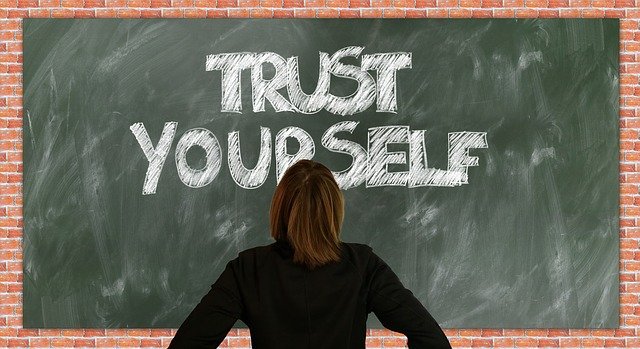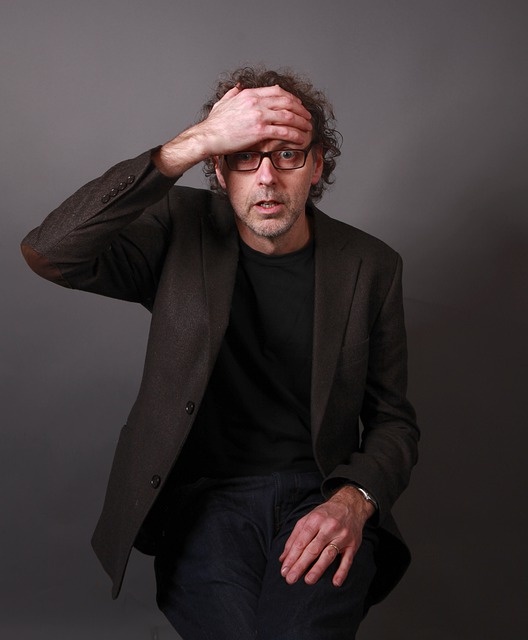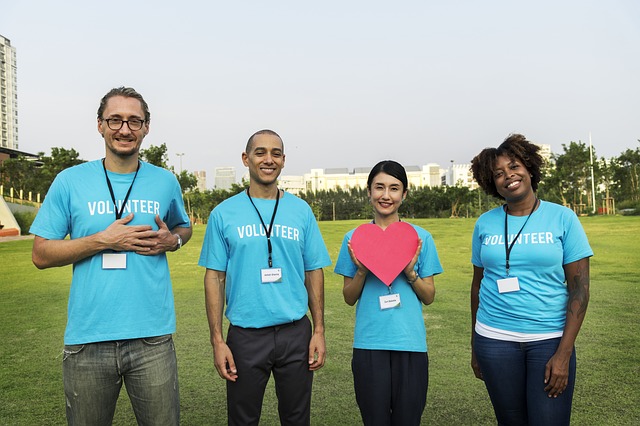In a Sounds True interview podcast, Tami Simon interviewed Patricia Stark about confidence in public communication situations such as speeches, presentations, workshops, job interviews and various forms of artistic performance. Patricia is an acclaimed executive coach and an expert in body language as well as having substantial experience as a presenter and producer on radio and TV. She spoke extensively about her book, Calmfidence: How to Trust Yourself, Tame Your Inner Critic, and Shine in Any Spotlight.
Patricia explained that she coined the word Calmfidence to highlight what her experience in communicating in the public arena has taught her – you cannot have confidence without inner calm. She argues that an external show of confidence is not enough – you can be disarmed if something does not go the way you expect. Under the pressure of the moment, you can easily lose track of what you want to say or experience an inability to “think straight”. Physiologically, you can experience the shakes, blanking out, headaches or pain in various parts of your body. Inner calm enables you to manage both your psychological and physical response. It facilitates emotional regulation and provides ways to dampen your physiological response.
Patricia explained that calmness underpinned confidence and involved trusting yourself and having a very clear idea of who you are and want to be. This enables you to develop less reactivity in situations that do not turn out as you expect and to communicate with genuineness and authenticity.
Barriers to confidence
We each have barriers that prevent us from communicating confidently and these barriers are highly individual in origin and intensity. Some of these barriers relate to past experiences while others are generated by the circumstances arising at the time of communicating publicly:
Past history – we each bring to a situation our experiences from the past that can create issues for us in terms of our confidence. We could have been bullied at school or work, made fun of by our peers face-to-face or on social media, made embarrassing mistakes or observed someone experiencing vicarious trauma during a confronting workshop. These negative experiences can make us prone to fearing an unsuccessful outcome when undertaking a public speaking endeavour and can even cause us to freeze during a job interview. I recall interviewing a manager for a job and at one stage he was unable to speak and actually had difficulty breathing. Through pacing, I was able to help him begin to breathe slowly and deeply and settle down for the rest of the interview. Patricia suggests that these past bad experiences need to be explored through “inner work” to bring them more into consciousness so that you can be aware of how they are playing out in your public interactions. She also suggests that you remind yourself why you are communicating with others and what benefit can accrue for them.
Perfectionism – can prevent us from even starting a public communication endeavour for fear of making mistakes. We will always be waiting for the right time which may never occur. Perfectionism can cause us to question what we have done in a public communication situation and generate a continuous cycle of “shoulds” and “what if’s”, e.g. “I should have started another way”, “What if I had given more examples?” We can beat up on ourselves for mistakes or alternatively see them as an opportunity to grow and develop our public speaking skills. Patricia suggests that we adopt a “growth mindset” which involves seeking continuous self-improvement in our practice while viewing mistakes as a learning experience on the path to personal improvement. She suggests that it is unrealistic to expect not to make mistakes because of our human limitations and noted that in the public media arena it is a given that you will sometimes make mistakes. In her view, often “good enough” is what is required and perfectionism can cause us to “freeze”, prevent flexibility and impede our ability to get in the zone and experience “flow”. Like Seth Godin, Patricia suggests that it is better to “start small” to develop the confidence and calmness required to communicate publicly than to not engage in public communication because the task we set ourselves is too big a challenge.
Negative self-talk – these are the thoughts that we are not good enough or that we have no right to put ourselves “out there”. Tina Turner explained that these thoughts can prevent you from making your unique contribution to the world and to positive experiences of other people. Tina actively developed her “inner landscape” through chanting and meditation and this enabled her to move beyond her “comfort zone” and realise her potential in performing for thousands of people. She was able to see the growth potential and “hidden treasures” that lie in life’s challenges, including public communication and performances. Tina recognised that we are not our negative thoughts but have the capacity to let them go and replace them with positive thoughts and expectations of success.
Reflection
Patricia indicated that she had a “painfully shy childhood” – she experienced panic at school, had other people take her place in the line at the shop to buy her lunch and would be shaking whenever she had to do a public presentation at school or college. She has developed many exercises and tools to develop a calm confidence which has helped her in her worklife and enabled her to help over 2,000 clients who have sought her assistance and guidance. She provides these tools and exercises in her book which offers very practical approaches to overcoming fear and anxiety around public communication.
Most people experience fear and anxiety around public communication, even seasoned performers. such as Tina Turner. As we grow in mindfulness through deep reflection, meditation and other mindfulness activities we can gain the self-awareness, courage and emotional regulation to enable us to achieve “Calmfidence” when engaging in public communications. Mindfulness activities assist us to expand our response ability.
___________________________________________
Image by Gerd Altmann from Pixabay
By Ron Passfield – Copyright (Creative Commons license, Attribution–Non Commercial–No Derivatives)
Disclosure: If you purchase a product through this site, I may earn a commission which will help to pay for the site, the associated Meetup group, and the resources to support the blog.









